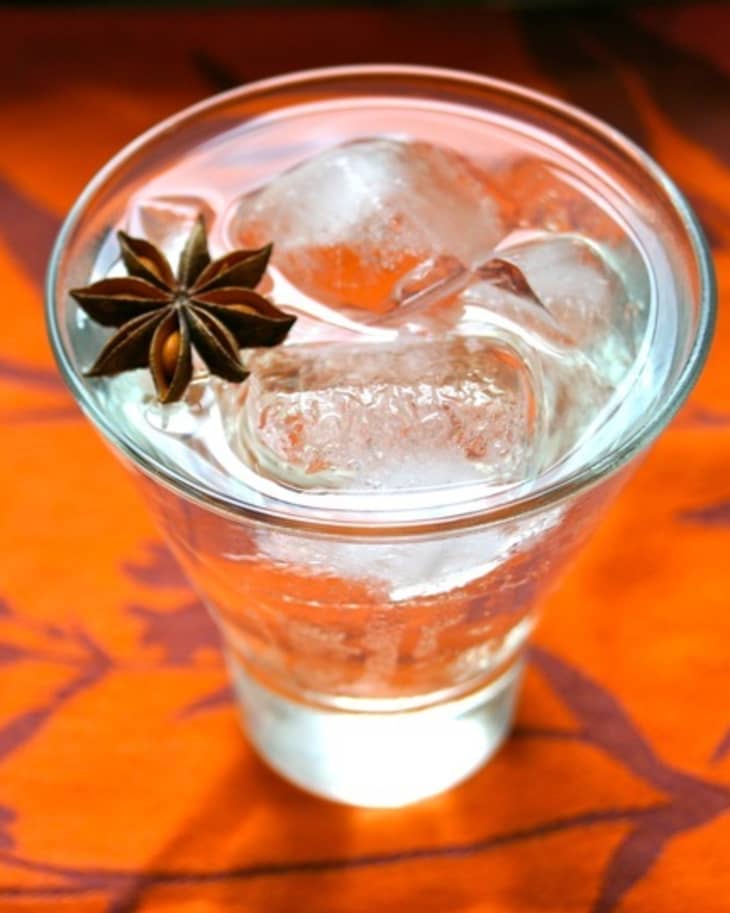The Gin & Tonic: 4 Fresh New Botanical Twists Straight Up Cocktails and Spirits
The tinkle of ice. The scent of fresh-cut lime. The bittersweet effervescence of tonic water. The soft, junipery astringency of gin. Mixed together, these four ingredients are heaven enough, no? But what would you say if we subbed out or added in one more element? Something with a botanical twist? Well, this week, I did just that: I mixed a Gin and Tonic four new ways.
I’d already been hearing some buzz about souped-up gin and tonics. Word is that they’re all the rage in Spain, and that there are many specialized bars in Barcelona dedicated to variations on this one classic drink. Recipe riffs at these Spanish bars include the addition of aromatic ingredients such as lemon zest, start anise, nutmeg, and cinnamon – all botanicals frequently used to flavor the myriad brands of gin available on the international market. The idea behind these herbal/spicy/citrus additions is to accentuate the flavors already found in the spirit, making the G&T an even more sublime drink. (You can read more about Spanish Gin and Tonic bars in this article from Food Republic here.)
If you love Gin and Tonics as much as I do, you’re probably feeling as intrigued by and skeptical about this idea as I did. On the one hand, embellished G&Ts sound like a delicious notion. Highlighting the botanicals that make gin so aromatic can only be a good thing, right? But on the other, maybe it’s all just gilding the lily, a fussy treatment of a drink that’s already perfect just the way it is.
So when the folks at Bulldog sent me a list of over half a dozen recipe variations to try with their gin, I was more than game. Each recipe included a botanical found in Bulldog Gin: lavender, liquorice, coriander, cinnamon, almond, lemon, and lychee fruit. I test-drove three of them with ingredients I had on hand in my own spice cupboard (cinnamon) and windowsill garden (coriander in the form of cilantro leaves, lavender), and added one of my own on a whim – star anise (not found in Bulldog) – just for fun.
The recipes I tested are all super simple and, with the exception of the one with muddled cilantro, can be consolidated into a single basic template:
Botanical Gin and Tonic (Basic Template)
makes one drink
2 ounces gin
4 ounces tonic water
garnish: a botanical of your choice (cinnamon stick, star anise, or a lavender sprig that has been clapped or “spanked” between your hands to release its essential oils) [Note: the original Bulldog lavender recipe calls for a drop of lavender bitters too.]
Cilantro-Lime Gin and Tonic
makes one drink
2 ounces gin
4 ounces tonic water
3 sprigs cilantro
2 lime wedges
In a shaker, pour in gin, and add cilantro and one lime wedge. Muddle. Shake. Pour into rocks glass filled with ice and top with tonic. Add garnish.
The Verdict
With the exception of the drink with the muddled cilantro, the flavor of the liquid itself in the glass was mostly unchanged. But the drinking experience was transformed. It was all about the aroma. Each time I lifted the glass to my lips, I’d get a lovely little waft of cinnamon/anise/lavender. Subtle and complex. A delicious complement to the gin without being overpowering at all. (Note to self, though: go easy on the cilantro. I think I over-muddled it and it came out kind of grassy and strong.) I’m not quite ready to trade in my good old favorite classic G&T for one of these this summer. But nice to know there are such delicious options if the mood strikes.
Have you tried any Gin and Tonic variations?
Nora Maynard is a longtime home mixologist and an occasional instructor at NYC’s Astor Center. She is a contributor to The Business of Food: Encyclopedia of the Food and Drink Industries and is the recipient of the American Egg Board Fellowship in culinary writing at the Writers’ Colony at Dairy Hollow. She previously covered food and drink in film at The Kitchn in her weekly column, The Celluloid Pantry.
Related: All About Gin and Tonics
(Images: Nora Maynard)
